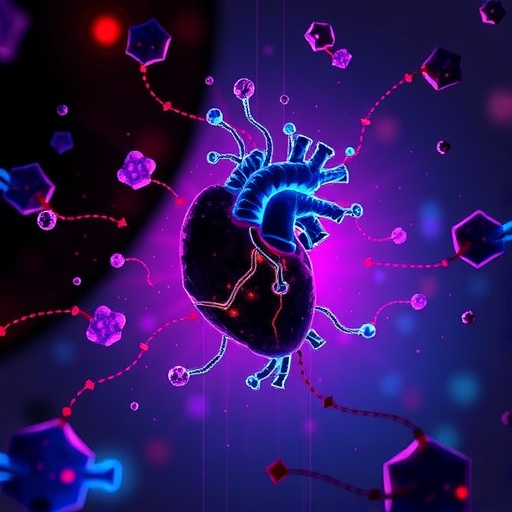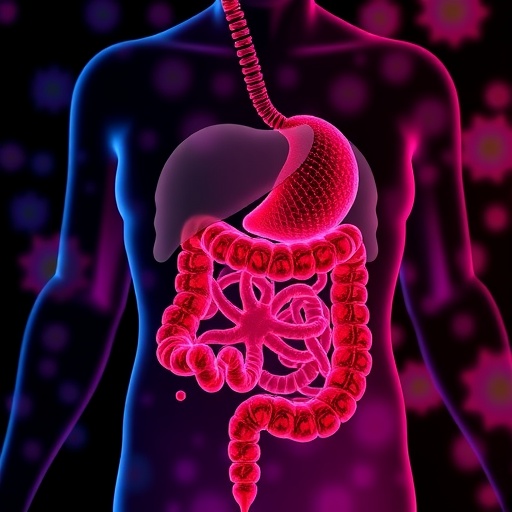
In an intriguing development within cardiovascular medicine, researchers have unveiled a potential breakthrough through their exploration of exosomal communication mediated by adipose-derived stem cells (ADSCs). Their study focuses on the role of circ-Hipk3, a circular RNA, in exosomes derived from these stem cells, illustrating how it can mitigate the damaging effects of myocardial infarction (MI), a crucial event leading to heart failure. This advancement not only provides deeper insights into the mechanisms of cardiac repair but also opens new avenues for therapeutic interventions that may improve outcomes for patients suffering from heart disease.
The emergence of circRNAs, such as circ-Hipk3, presents an exciting avenue for research, particularly in how they function in cellular signaling and gene regulation. These circular RNAs are known for their stability and ability to modulate the expression of target genes, making them potent regulators of cellular identity and function. In the setting of MI, where cell death and inflammation predominate, understanding circRNA dynamics is vital. The researchers demonstrate that circ-Hipk3 plays an integral role in the restorative processes initiated by ADSCs post-infarction, highlighting its significance in cardiac regeneration.
During myocardial infarction, heart cells undergo significant stress leading to apoptosis and loss of function. The study proposes that exosomes loaded with circ-Hipk3 provide a protective cellular microenvironment, essential for restoring heart tissue integrity. By transferring circ-Hipk3 to cardiomyocytes, the exosomes not only enhance cellular resilience but also promote autophagy – a critical process involved in clearing damaged cellular components. Autophagy is pivotal in maintaining cellular health, especially during stress conditions prevalent in myocardial infarction.
The researchers delve further into the molecular mechanisms at play, particularly focusing on the interaction between circ-Hipk3 and microRNA-138-5p. This microRNA has been identified as a critical player in the regulation of autophagy and cell survival mechanisms in cardiomyocytes. The study elucidates how circ-Hipk3 serves as a molecular sponge for miR-138-5p, thereby sparing its target, Sirt1. Sirt1 is known for its role in promoting autophagy, highlighting a fine-tuned regulatory axis where circ-Hipk3 modulates miR-138-5p levels to ultimately support Sirt1 activity.
By illustrating this unique relationship, the research presents a compelling case for leveraging circ-Hipk3-expressing exosomes as potential therapeutic tools. Administering these engineered exosomes could conceivably enhance myocardial protection and functionality in patients who have suffered an MI. This innovative approach underlines the significance of stem cell-derived exosomes in regenerative medicine, paving the way for novel strategies to combat heart disease by using biological materials already present in the patient’s body.
Moreover, the implications of utilizing ADSC-derived exosomes extend beyond myocardial infarction. The findings prompt additional inquiries into whether this therapeutic strategy could be adapted for various cardiac pathologies. Given the critical need for effective treatments that enhance cardiac repair mechanisms, circ-Hipk3 emerges as a promising candidate, with the potential to shift paradigms in cardiac therapies. Such advancements could dramatically alter the landscape of heart disease management, emphasizing the need for further investigation into the diverse roles of circRNAs.
The shift toward exosome-based therapies reflects an emerging understanding of the importance of intercellular communication in regenerative medicine. The ability of exosomes to transport functional RNA, proteins, and other biomolecules allows them to influence target cells profoundly and assertively. This research series brings to light the necessity for continued experimentation to optimize exosomal cargo and explore the vast regulatory possibilities that exist within circRNA networks.
The findings also strengthen the case for personalized medicine, where therapies can be tailored based on molecular profiles of individual patients. The uniqueness of circ-Hipk3 and its interaction with specific micrornas presents an opportunity for developing specialized treatment regimens, thereby enhancing the therapeutic response and minimizing adverse events. While the current study centers on myocardial infarction, understanding circRNA mechanisms could lead to broader applications in treating various degenerative diseases.
As the field progresses, the promise of circRNAs and exosomes stands poised to influence other therapeutic strategies beyond the cardiovascular realm. This research not only contributes invaluable insights into the mechanisms that pivot around heart cell biology and repair but also magnifies the potential for circRNA-centric therapies to address multifactorial diseases where cellular communication is disrupted.
In conclusion, the research surrounding circ-Hipk3 and its roles in alleviating myocardial infarction-induced damage encapsulates a significant step forward in cardiovascular medicine. With groundbreaking studies like this one leading the charge, we stand on the brink of a revolution to redefine how we approach heart disease, presenting a harmonious integration of biology and innovative therapeutic strategies. As further research unfolds, the impact of circRNA and stem cell-derived exosomes promises to reshape our understanding and treatment of cardiac conditions.
The road ahead is filled with possibilities as scientists work diligently to harness the intricate mechanisms of circRNAs and exosomes, potentially revolutionizing treatment paradigms for numerous pathologies. The innovative applications of these findings pave an exciting path for future studies geared towards the ultimate goal of improving patient outcomes through tailored and effective regenerative therapies.
By focusing on cellular communication, researchers continue to unveil the complexity of biological systems and their interactions. The need for comprehensive approaches that leverage the body’s innate mechanisms of repair emphasizes the value of interdisciplinary research, integrating molecular biology with clinical applications. The interplay between stem cells, circular RNAs, and cardiomyocytes may become one of the significant breakthroughs in modern medicine, particularly in the wake of rising cardiovascular diseases globally.
As the scientific community embraces the potential of these discoveries, it remains essential to monitor ongoing advancements, translating laboratory findings into real-world applications that ultimately benefit patients. The story of circ-Hipk3 in the realm of myocardial infarction is only the beginning of a larger narrative exploring the efficacy and possibilities of innovative approaches to heal hearts devastated by disease.
Subject of Research: The role of circ-Hipk3 in exosomes derived from adipose-derived stem cells in alleviating myocardial infarction-induced myocardial damage.
Article Title: Circ-Hipk3 in Adipose Derived Stem Cells Exosome Alleviates Myocardial Infarction Induced Myocardial Damage by Regulation miR-138-5p/Sirt1 Axis Mediated Autophagy.
Article References: Yang, G., Nong, D., Tang, X. et al. Circ-Hipk3 in Adipose Derived Stem Cells Exosome Alleviates Myocardial Infarction Induced Myocardial Damage by Regulation miR-138-5p/Sirt1 Axis Mediated Autophagy. Biochem Genet (2025). https://doi.org/10.1007/s10528-025-11173-5
Image Credits: AI Generated
DOI:
Keywords: circ-Hipk3, exosomes, stem cells, myocardial infarction, cardiomyocytes, autophagy, microRNA, regenerative medicine, heart disease, therapy, Sirt1.
Tags: adipose-derived stem cells in heart diseaseapoptosis and heart cell function during MIcirc-Hipk3 role in cardiac repaircircRNA dynamics in heart healthcircular RNA in cellular signalingexosome communication in cardiovascular medicineexosomes in myocardial infarction treatmentgene regulation by circular RNAsmechanisms of cardiac regenerationmiR-138-5p/Sirt1 pathway in heart protectionmyocardial infarction and heart failuretherapeutic interventions for heart disease




